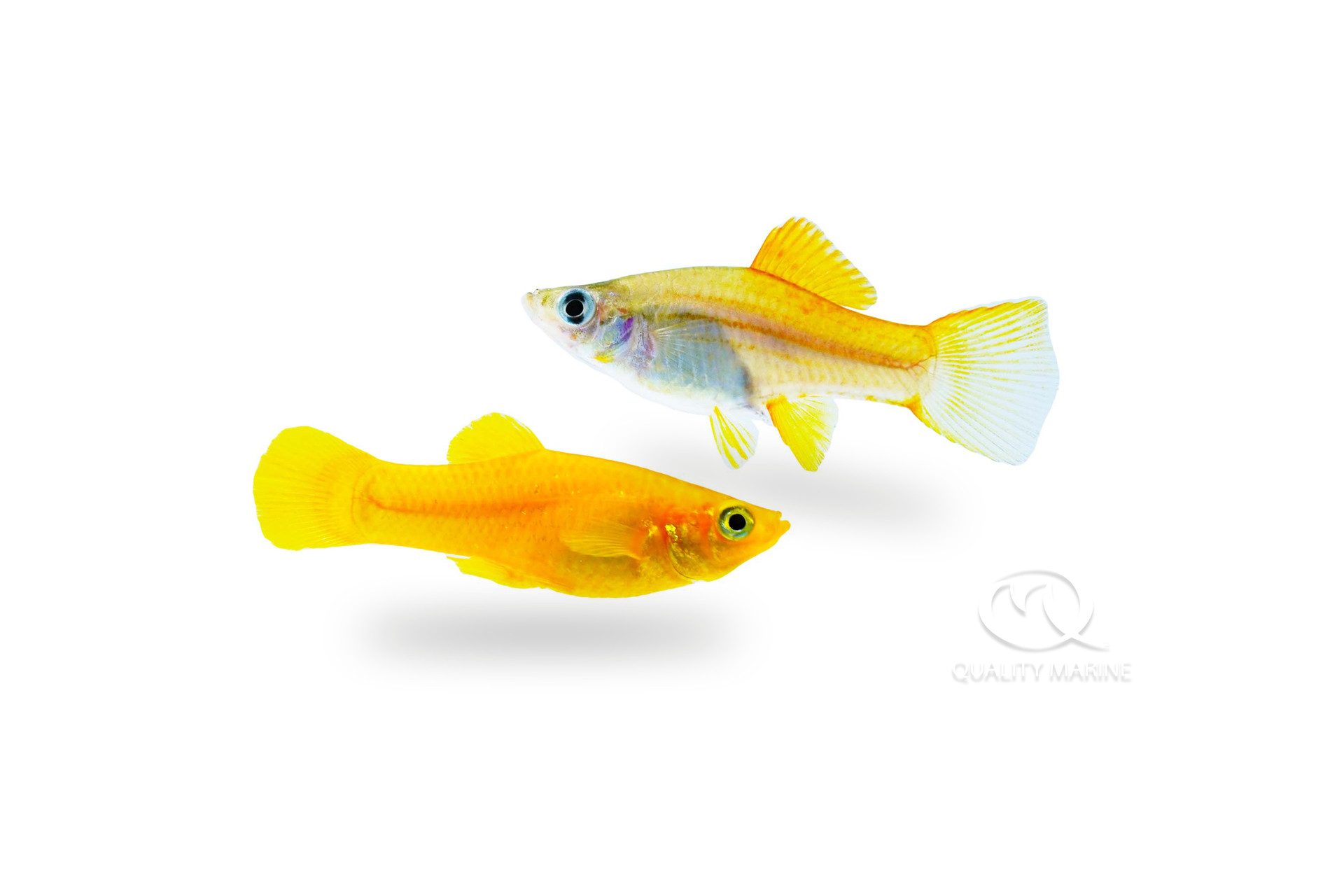The Mystery of the Marine Molly

The group of fish known as Mollies is popular for good reason. They are very hardy, easy to breed, come in a brilliant array of colors and patterns, eat algae and algal films, and are with few exceptions, very inexpensive! All this combined with their high activity level has made them one of the hobby's most popular “dither fish ” (that fish that is super active and never hides making all the other fish in the tank feel secure and less likely to hide). Now, what if I told you that you could also put them in a marine aquarium, and they would bring all these same benefits in that system too? Well, it turns out that most Mollies (Poecilia latipinna) are “euryhaline” meaning they are able to not just live, but thrive in a wide variety of salinity, including full salinity saltwater.
Why would you want Mollies in your marine aquarium? A better question is why wouldn't you? This represents a peaceful algae film eating fish that has a penchant for breeding, which has the side benefit of providing a great source of live food in the aquarium. In addition, there are very very few jet black fish or dazzling platinum white fish or calico looking fish (the list goes on) in the marine aquarium hobby at all. The mollies are all that and more, and frequently with a price tag that is almost on par with a few frozen silversides. From a pure budget perspective, the jet black, algae eating, Black Tang (Zebrasoma Rostratum) regularly retails for somewhere between $1500 and $2000 dollars (if you can get one.) For the high end of this range, you could have 400 Black Lyretail Mollies! What a display! Okay, so maybe that is taking it a bit far, but the point is many people want all black fish, and they are expensive. Conversely, a group of mollies is a legitimate option.
What are the catches or things I should be thinking about? Well, Mollies love to graze on algal films, which means they are also likely to graze on corals, though many people report this not being an issue because the soft mouthed Mollies don't often damage the polyps as they are just trying to get the algal film. This being said, your corals could get irritated, especially if you have few or they are very small. Also, Mollies have a penchant for getting eaten by strong anemones and big fish. Occasionally check your sump for babies as they just can't deal with the flow in marine aquariums and frequently get sent down the overflow. Even in lower flow tanks this is a possibility. In addition, there is little or no overlap between saltwater and freshwater ailments for fish, so there is no good reason to quarantine the Mollies before adding them to your aquarium.
How do you graduate to this level of sorcery? Through the mundane magic of drip acclimation. At this point, there are a few videos out there on the interwebs of people doing this successfully. Our advice is to watch most of these, then go slow and work in batches if you are acclimating more than a half dozen fish or so. Test the salinity of the water in the molly bucket frequently and also make sure it is staying at a reasonable temperature. Expect this process to take most of the day, so plan ahead and bring a sando. We have heard of this going as quickly as 5 hours but letting it drag out to 8 or more is not detrimental, some aquarists recommend doing this process over a couple days, but we've found this to be generally unnecessary.
You've got a dithering school of Mollies in your tank, what now? Well, keep them well fed. They will have no problem on a high quality marine flake or small soft pellet. If the tank is light on available algae, supplementing algal based foods will help keep them healthy. As a general rule of thumb, we suggest to only keep one type of Molly in the aquarium. Give them some cover to swim around and choose sensible tankmates, avoiding overly aggressive fish and larger piscivores. Lastly, visit us on our social media channels and share some content! Let's see those displays!